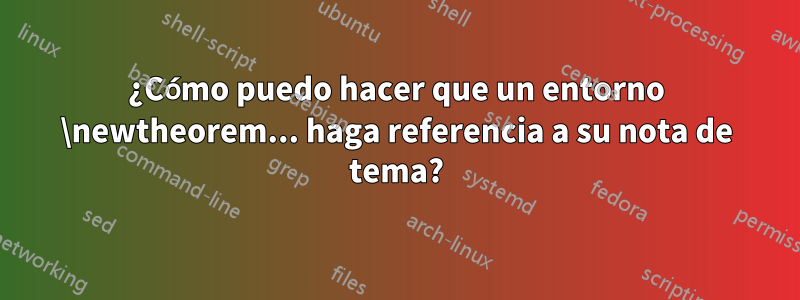
Actualmente estoy usando \newtheoremstylepara producir el siguiente resultado:
Pregunta:¿Cómo puedo modificar fácilmente mi MWE (ver más abajo) para que ela¿Hay en mis cuadros QED que digan "Nombre de la cosa", "Una cosa diferente", etc.?
Esto es lo que me gustaría tener:
Aquí está mi MWE:
\documentclass[12pt]{article}
\usepackage{amsthm}
\newtheoremstyle{underlinenonum}% name
{-1.5mm} % Space above, empty = `usual value'
{} % Space below
{} % Body font
{\parindent} % Indent amount (empty = no indent, \parindent = para indent)
{} % Thm head font
{} % Punctuation after thm head
{ } % Space after thm head: \newline = linebreak
{\noindent{\underline{\thmnote{#3:}}}}
\theoremstyle{underlinenonum}
\newtheorem*{subcase}{subcase}
\let\mtendsubcase\endsubcase
\renewcommand{\endsubcase}{\renewcommand\qedsymbol{\tiny\fbox{a}}\qed\mtendsubcase}
\begin{document}
\begin{subcase}[Name of Thing] This is a thing I would like to say.\end{subcase}
\begin{subcase}[A Different Thing] This is a \textit{different} thing I would like to say, and I need a QED to automatically reflect \textit{its} argument.\end{subcase}
\end{document}
Tenga en cuenta que quiero incluir "Nombre de la cosa", "Una cosa diferente", etc. como argumento en el subcaseentorno del teorema y hacer que el cuadro QED extraiga automáticamente ese argumento.
De forma independiente, intenté usar \fbox{\thmnote}}, etc., en lugar de fbox{a}, pero cada iteración produce un error. También probé Googleybuscando sXe, todo fue en vano.
Edición 1:Como se indica en los comentarios a continuación, yonoQuiero escribir manualmente los argumentos estáticos en los cuadros QED, porque se utilizarán varios de estos entornos sucesivamente y me gustaría que cada cuadro QED refleje su respectivo thmnote.
Respuesta1
Envuelva el entorno similar a un teorema en uno nuevo donde pueda absorber más fácilmente el nombre y usarlo como desee.
Cambié la sintaxis para subcasetener un argumento obligatorio, que es semánticamente más sólido. Y le quité el subrayado: lo siento, pero no lo soporto.
\documentclass[12pt]{article}
\usepackage{amsthm}
\newtheoremstyle{underlinenonum}% name
{-1.5mm} % Space above, empty = `usual value'
{} % Space below
{} % Body font
{\parindent} % Indent amount (empty = no indent, \parindent = para indent)
{} % Thm head font
{} % Punctuation after thm head
{ } % Space after thm head: \newline = linebreak
{\noindent\textbf{\thmnote{#3:}}}
\theoremstyle{underlinenonum}
\newtheorem*{subcaseinner}{subcase}
\newenvironment{subcase}[1]
{%
\renewcommand\qedsymbol{\subcaseqed{#1}}%
\subcaseinner[#1]%
}
{\qed\endsubcaseinner}
\newcommand{\subcaseqed}[1]{\fbox{\tiny #1}}
\begin{document}
\begin{subcase}{Name of Thing}
This is a thing I would like to say.
\end{subcase}
\begin{subcase}{A Different Thing}
This is a \textit{different} thing I would like to say, and I need
a QED to automatically reflect \textit{its} argument.
\end{subcase}
\end{document}





